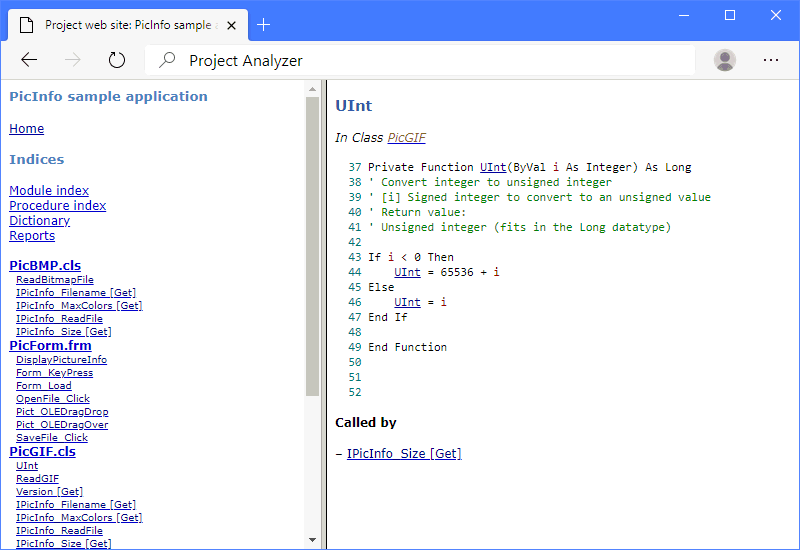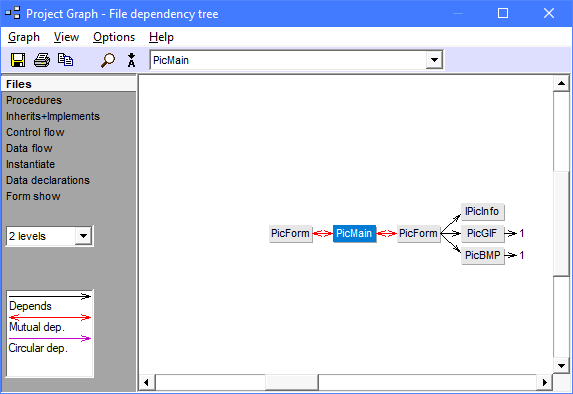Project Analyzer Pro Edition
Project Analyzer comes in three different editions. The Pro Edition extends the Standard Edition with 4 tools: Super Project Analyzer, Project Printer, Project Graph and Project NameCheck. You can find them in the Pro menu of Project Analyzer. These tools are also included in the Enterprise Edition.
Super Project Analyzer: Find dead code in shared files
Super Project Analyzer combines several analyses to detect dead code. Sometimes a single analysis is not enough to detect dead code. This happens when several projects use the same file. All the user projects have to be accounted for with Super Project Analyzer.
Super Project Analyzer is not a VB project group (.vbg) or solution (.sln) analyzer. For this purpose, use multi-project analysis in the Enterprise Edition. To use Super Project Analyzer, you need VB source code files that are included in several projects (.vbp/.vbproj).
Project Printer: Document and surf the source code
Need to document your projects? Then you need Project Printer. It's an advanced document generator that combines code with analysis results.

Source code documents. Put all your code in document files or on paper. Optionally include things like cross-references and detected problems.
Comment manuals. Generate a manual out of comments in code. Optionally, use special comment syntax to format the results.
Project web site. Turn all source to HTML. Click on links to surf around. Optionally, put the web site into a single .mht or .chm file to give to your colleagues or to include in your project documentation. View sample
Project Graph: Graphical code documentation
Project Graph makes graphs out of source code. Browse the trees to learn where calls come from and where they go to. Attach the trees to your project documentation for an intuitive project cross reference. Make impact analyses to see what happens when you change a part of code.

- File dependency tree shows how source files require each other to compile or run.
- Procedure call tree shows how procedure execution flows backward and forward.
- Inherits and Implements tree visualizes the class hierarchy.
- Control flow tree shows how procedure execution flows between modules. (For regular flow charts, try Visustin)
- Data flow tree shows how data flows between modules via variable read/write, procedure parameters and function return values.
- Instantiation tree shows where classes are being instantiated.
- Data declaration tree shows where classes, structures, interfaces and forms are being used as data types.
- Form show tree visualizes the order in which forms show each other.
Project NameCheck: Enforce naming standards
Naming conventions are used to make code more understandable. Use "i" for Integer and "g" for Global, and everyone immediately knows which variable is a Global Integer.
Project NameCheck ensures that variable, procedure, control and other names conform to your naming standards. You can customize the rules to what you currently use. A sample standard is included if you are just beginning to use naming conventions.